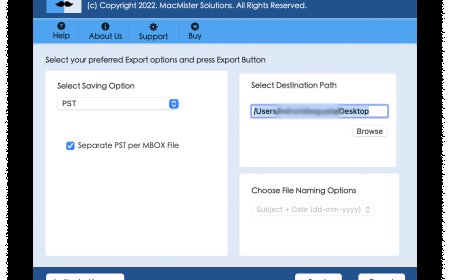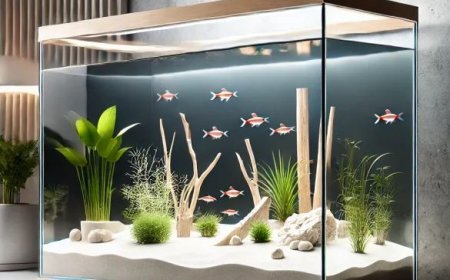How to Enjoy a Picnic at Usery Pass Lake
How to Enjoy a Picnic at Usery Pass Lake Usery Pass Lake, nestled in the rugged beauty of the Sonoran Desert near Mesa, Arizona, offers a rare and serene escape for outdoor enthusiasts seeking tranquility, natural beauty, and a perfect setting for a day of relaxation. Though often overshadowed by more famous desert destinations, this hidden gem provides an ideal picnic environment—shaded by native
How to Enjoy a Picnic at Usery Pass Lake
Usery Pass Lake, nestled in the rugged beauty of the Sonoran Desert near Mesa, Arizona, offers a rare and serene escape for outdoor enthusiasts seeking tranquility, natural beauty, and a perfect setting for a day of relaxation. Though often overshadowed by more famous desert destinations, this hidden gem provides an ideal picnic environment—shaded by native mesquite and palo verde trees, framed by sweeping desert vistas, and dotted with quiet coves perfect for unwinding. Unlike crowded urban parks, Usery Pass Lake delivers a sense of solitude and authenticity that transforms a simple meal under the sun into a memorable, soul-replenishing experience.
Enjoying a picnic at Usery Pass Lake isn’t just about unpacking sandwiches and blankets—it’s about harmonizing with the desert rhythm. The key lies in preparation, respect for the environment, and an understanding of the unique conditions this high-desert ecosystem presents. From selecting the right time of year to packing essentials that balance comfort and sustainability, every detail matters. This guide walks you through the complete process of planning, executing, and savoring a picnic at Usery Pass Lake, ensuring your visit is not only enjoyable but also responsible and enduringly rewarding.
Step-by-Step Guide
1. Research and Plan Your Visit
Before heading out, gather essential information about Usery Pass Lake’s operating hours, weather patterns, and seasonal accessibility. The lake is part of the Usery Mountain Regional Park, managed by Maricopa County Parks and Recreation. It is open daily from 6:00 a.m. to 8:00 p.m., with peak seasons occurring between October and April when temperatures are most pleasant. Summer months can exceed 110°F, making picnicking during midday unsafe and uncomfortable.
Check the official park website for alerts regarding trail closures, water levels, or special events. While the lake is typically non-swimming and non-boating, it remains a popular spot for birdwatching and photography. Confirm whether the picnic areas require reservations—currently, they are first-come, first-served, but large groups may be asked to limit size during high-traffic weekends.
2. Choose the Right Day and Time
Timing is critical for a successful picnic. Aim for weekdays—Tuesday through Thursday—to avoid weekend crowds. Early morning (7:00 a.m. to 10:00 a.m.) offers the coolest temperatures and the most peaceful atmosphere. You’ll also catch the desert in its most photogenic state, with soft golden light filtering through the trees and wildlife beginning their daily routines.
If you prefer a late afternoon picnic, arrive by 3:00 p.m. to secure a shaded spot before the sun dips behind the mountains. Sunset at Usery Pass Lake is spectacular, with the sky turning deep oranges and purples, casting long shadows over the desert floor. Plan to leave shortly after dusk to avoid navigating the park in low light.
3. Select Your Picnic Spot
Usery Pass Lake features several designated picnic areas, each with distinct advantages. The main picnic area near the lake’s northern shore offers the most shade, with large mesquite trees and paved tables. This is ideal for families or groups. For solitude, head to the western cove—accessible via a short, well-marked trail—where you’ll find quieter, more secluded tables nestled among boulders and desert scrub.
Use the park map available at the entrance or downloaded from the official website to locate restrooms, water fountains, and trash receptacles. Choose a site within 100 feet of a trash bin to minimize litter and make cleanup easier. Avoid setting up directly on the shoreline to protect native vegetation and prevent erosion.
4. Pack Smart: The Essential Picnic Kit
Packing for a desert picnic requires thoughtful selection. Unlike urban parks, Usery Pass Lake has limited amenities—no concessions, no electricity, and minimal shade beyond natural trees. Your kit should include:
- Insulated cooler with reusable ice packs (no loose ice, as it melts and creates mud)
- Reusable plates, utensils, and napkins (avoid single-use plastics)
- Large picnic blanket with a waterproof backing to protect against damp ground
- Wide-brimmed hats and UV-protective sunglasses
- SPF 50+ sunscreen and lip balm with UV protection
- At least 1 gallon of water per person (more if visiting in spring or fall)
- Portable shade tent or umbrella (optional but highly recommended for extended stays)
- Trash bags (pack out everything you bring in)
- First-aid kit with antiseptic wipes, bandages, and insect repellent
- Binoculars and field guide for birdwatching (great horned owls, roadrunners, and hawks are common)
- Camera or smartphone with extra battery
Food should be easy to eat, non-messy, and non-perishable. Think wraps, fresh fruit (apples, oranges), cheese cubes, nuts, and pre-packaged trail mix. Avoid foods that attract ants or wasps—sugary drinks, open honey jars, or sticky pastries. If you must bring sweets, seal them in airtight containers.
5. Prepare for the Desert Environment
The Sonoran Desert is unforgiving if unprepared. Even on mild days, the sun’s intensity can cause heat exhaustion. Wear light-colored, loose-fitting clothing made of breathable fabrics like cotton or linen. Closed-toe shoes are essential—desert terrain includes sharp rocks, cactus spines, and hidden wildlife.
Apply sunscreen 30 minutes before departure and reapply every two hours. Keep a spray bottle of water handy to mist your neck and wrists for evaporative cooling. Never leave children or pets unattended near the water’s edge, even if the lake appears shallow.
Be aware of wildlife. Gila monsters and rattlesnakes are present but rarely aggressive. Give them space. If you see one, slowly back away. Do not attempt to touch or photograph closely. Scorpions are active at night, so shake out shoes and blankets before use.
6. Set Up Your Picnic Area
Upon arrival, choose your spot and lay out your blanket or tablecloth first. Position your cooler in the shade, ideally under a tree or beneath your portable umbrella. Place trash bags in easy reach—this encourages responsible cleanup.
Arrange food items so they’re accessible without constantly opening the cooler. Keep drinks cold and within arm’s reach. If you’re bringing a thermos of coffee or tea, wrap it in a towel to retain heat. Use small bowls or containers to serve snacks rather than eating directly from bags.
Keep your area tidy. Even if you think you’re alone, others may pass by. A clean, organized picnic space reflects respect for the environment and fellow visitors.
7. Engage with the Environment
A picnic at Usery Pass Lake is not just about eating—it’s an immersive experience. Take time to observe. Listen to the wind rustling through the saguaro cacti. Watch a red-tailed hawk circle overhead. Identify the scent of creosote bush after a light rain—the desert’s signature aroma.
Bring a journal or sketchpad. Many visitors find the quiet solitude here deeply inspiring. Record your thoughts, sketch a cactus bloom, or write a poem. This transforms your picnic from a meal into a mindful ritual.
Encourage children to participate in nature observation. Use a free birdwatching app like Merlin Bird ID to identify local species. Point out how desert plants conserve water—succulent leaves, spiny defenses, deep root systems. These moments create lasting educational memories.
8. Clean Up and Leave No Trace
Before departing, conduct a final sweep of your area. Check under tables, inside coolers, and beneath blankets for crumbs, wrappers, or forgotten items. Double-bag all trash and carry it out. Even biodegradable items like fruit peels can disrupt local wildlife and are not native to the desert ecosystem.
Do not leave anything behind—not napkins, not bottle caps, not pet waste. The park’s natural beauty depends on visitor responsibility. If you see litter left by others, pick it up. One person’s effort can inspire others.
Refill your water bottle from the park’s designated stations before leaving. Never pour leftover water on the ground—it can attract pests and alter local soil composition.
9. Extend Your Experience
After your picnic, consider a short hike. The Usery Pass Trail (1.5 miles round trip) offers panoramic views of the lake and surrounding mountains. The trail is easy to moderate, with minimal elevation gain and shaded sections. Bring a camera—you’ll want to capture the desert’s layered ridges and distant Phoenix skyline.
Alternatively, visit the park’s nature center, open weekends from 9 a.m. to 4 p.m. It features interactive exhibits on desert ecology, native plants, and archaeological artifacts from the Hohokam people who once inhabited the region.
If you’re visiting during spring (March–April), you may witness wildflower blooms—golden poppies, purple lupine, and desert lilies—transforming the landscape into a vibrant mosaic. Plan your picnic around these blooms for a truly unforgettable experience.
10. Return with Gratitude
Before leaving the park, take a moment to pause. Look back at the lake, the trees, the silence. Acknowledge the privilege of being in this place. Leave with no trace, but carry with you a deeper appreciation for the desert’s quiet resilience.
Share your experience with friends—not just photos, but stories. Encourage others to visit responsibly. The more people who understand how to enjoy Usery Pass Lake with care, the longer it will remain a sanctuary for all.
Best Practices
Respect Wildlife and Vegetation
Usery Pass Lake exists because of its fragile desert ecosystem. Native plants like the saguaro cactus grow slowly—sometimes only an inch per year—and can live over 200 years. Never climb on or carve into cacti. Do not pick wildflowers or remove rocks, feathers, or shells. These elements are part of a delicate balance.
Animals depend on natural food sources. Never feed squirrels, birds, or lizards. Human food can make them sick or alter their natural behaviors. Store food securely and clean up immediately after eating.
Minimize Noise and Disturbance
Desert wildlife is sensitive to human noise. Keep music low or use headphones. Avoid loud conversations, especially near nesting areas. If you bring children, teach them quiet observation. The desert rewards stillness.
Even the sound of a car door slamming can startle a coyote or send birds into flight. Close doors gently. Speak softly. Let the desert speak for itself.
Water Conservation Is Non-Negotiable
Arizona is in a prolonged drought. Every drop counts. Use only the water you need. Bring a refillable bottle and avoid single-use plastic. If you wash dishes, use minimal water and carry the wastewater away in a sealed container. Never rinse dishes near the lake or in natural drainage areas.
Plan for Weather Extremes
Desert weather changes rapidly. A clear morning can turn into a dust storm by afternoon. Check the forecast before leaving. If high winds or thunderstorms are predicted, reschedule. Flash floods can occur even if it’s not raining at the lake—dry washes can fill in minutes.
In winter, temperatures can drop below freezing at night. Bring a light jacket even if you’re only staying until sunset. Layering is key.
Bring a Backup Plan
What if your preferred picnic spot is taken? What if the cooler leaks? What if you forget sunscreen? Always have a contingency. Pack a small towel for spills. Bring extra water. Know the location of the nearest restroom and ranger station. The park office is located near the main entrance and can assist with maps, water refills, or emergency advice.
Photography Etiquette
Usery Pass Lake is a photographer’s paradise. But respect privacy and space. Do not block trails or picnic areas to get the perfect shot. If others are using a viewpoint, wait your turn. Avoid using flash near wildlife. Use natural light—early morning and late afternoon offer the best glow.
Always ask permission before photographing other visitors, especially children. Share your photos with the hashtag
UseryPassLake to help promote responsible tourism.
Group Size and Behavior
While picnicking with friends is enjoyable, large groups can overwhelm the environment. The park recommends groups of no more than 10 people for picnic areas. If you have a larger gathering, consider splitting into smaller units or visiting on a weekday. Keep music to a minimum, and designate one person to manage trash and cleanup.
Teach children to stay within sight. The desert’s terrain can be disorienting. Use a whistle or bright-colored hat to keep track of them.
Tools and Resources
Official Park Resources
The Maricopa County Parks and Recreation Department maintains a comprehensive website for Usery Mountain Regional Park: www.maricopacountyparks.net. Here you’ll find:
- Current park hours and holiday closures
- Trail maps and difficulty ratings
- Wildlife alerts and seasonal bloom reports
- Photography permits for commercial use
- Volunteer opportunities and educational programs
Download the free “Maricopa County Parks” app for offline maps, real-time alerts, and directions to parking and picnic areas.
Mobile Apps for Enhanced Experience
Several apps can elevate your picnic from ordinary to extraordinary:
- Merlin Bird ID (Cornell Lab of Ornithology) – Identify birds by photo or sound.
- Seek by iNaturalist – Recognize plants, insects, and animals using your phone’s camera.
- AllTrails – Read user reviews of trails and find nearby water sources.
- Weather Underground – Get hyperlocal forecasts for the Usery Pass area.
- Google Maps Offline – Download the park map in advance; cell service is spotty.
Recommended Gear
Invest in quality gear that lasts. These items are trusted by regular visitors:
- Yeti Hopper Flip 12 Cooler – Durable, leak-proof, and excellent insulation.
- REI Co-op Flash Air 2 Chair – Lightweight, packs small, and has a built-in cup holder.
- Decathlon UV Protection Sun Umbrella – Blocks 99% of UV rays and withstands desert winds.
- Hydro Flask Wide Mouth Bottle – Keeps drinks cold for 24+ hours.
- Adventure Medical Kits Desert First Aid Kit – Compact, waterproof, and includes antivenom info cards.
Books and Guides
Deepen your understanding of the desert with these resources:
- Desert Plants of the Sonoran Desert by Charles H. Lowe
- The Sonoran Desert: A Natural History by James C. Nienstaedt and R. G. Lueders
- Wildflowers of Arizona by William R. Carr
- Leave No Trace: A Guide to the New Wilderness Ethics by L. B. (Lynn) Davis
Many of these are available at the park’s nature center gift shop or via local libraries.
Volunteer and Educational Programs
Connect with the park community by joining a guided nature walk or volunteering for a clean-up day. The park hosts monthly “Desert Stewards” events where visitors help remove invasive species and maintain trails. These programs are free and open to all ages. Sign up through the park website.
Real Examples
Example 1: The Solo Photographer’s Morning
Maya, a freelance photographer from Tempe, arrives at Usery Pass Lake at 6:30 a.m. on a crisp October morning. She brings a lightweight tripod, a 70–200mm lens, and a thermos of black coffee. She sets up under a mesquite tree near the western cove, where the morning light hits the water at just the right angle. She spends two hours capturing reflections of clouds on the lake, the silhouette of a red-tailed hawk, and the dew clinging to a prickly pear cactus. She eats a simple breakfast of granola bars and an orange, then packs everything away—leaving no trace. Later, she posts her images on Instagram with the caption: “The desert doesn’t need noise. It just needs to be seen.” Her post goes viral, inspiring dozens to visit with cameras and respect.
Example 2: The Family Picnic with Kids
The Rivera family—parents and two children aged 7 and 10—visit on a Saturday in November. They pack a picnic basket with turkey wraps, apple slices, and trail mix. They bring a small binocular set and a nature bingo card they printed from the park’s website. The kids check off “roadrunner,” “saguaro,” and “lizard.” They hike the 0.5-mile loop trail, stopping to examine a dried gourd and a snake skin. They eat under a shaded table, then help their parents bag all trash. On the way out, they collect a single fallen saguaro blossom (left on the ground) and press it in a book. “It was the best day ever,” says the younger child. The family returns every November now.
Example 3: The Couple’s Sunset Ritual
Every Friday evening, James and Elena drive to Usery Pass Lake. They bring a blanket, two cups of herbal tea, and a small speaker playing ambient desert sounds. They sit in silence as the sun sets behind the Superstition Mountains. No photos. No talking. Just stillness. They’ve done this for seven years. “It’s our reset button,” Elena says. “The desert doesn’t care about our deadlines. It just reminds us we’re part of something older.”
Example 4: The Community Clean-Up
In March, a group of 15 high school students from Mesa Unified School District organized a picnic and clean-up event. They brought 50 reusable bags, gloves, and a donation jar for park supplies. After eating sandwiches and fruit, they spent two hours collecting litter along the shoreline. They found plastic bottles, cigarette butts, and even a broken phone. They documented their work and presented it to the school board, leading to a new environmental club. The park director invited them back as official “Junior Desert Guardians.”
FAQs
Is swimming allowed at Usery Pass Lake?
No, swimming is not permitted at Usery Pass Lake. The lake is a non-recreational water body maintained for wildlife habitat and irrigation. Entering the water is prohibited to protect the ecosystem and ensure safety.
Can I bring my dog to the picnic area?
Yes, dogs are allowed but must be kept on a leash no longer than six feet at all times. Clean up after your pet immediately and carry waste bags. Dogs are not permitted on trails beyond the picnic areas unless specified.
Are there restrooms at Usery Pass Lake?
Yes, ADA-accessible restrooms are located near the main picnic area and at the trailhead. They are maintained daily but may be temporarily closed during high winds or maintenance. Bring hand sanitizer as a backup.
Can I reserve a picnic table?
No, picnic tables are available on a first-come, first-served basis. There is no reservation system for individual or small group use. Large groups (15+) should contact the park office in advance to ensure availability and compliance with group guidelines.
Is there cell service at Usery Pass Lake?
Cell service is limited and unreliable. Verizon tends to have the strongest signal near the entrance. For safety, download maps and emergency contacts before arriving. Inform someone of your plans and expected return time.
What’s the best time of year to visit for a picnic?
October through April offers the most comfortable temperatures (60–80°F). Spring (March–April) is ideal for wildflowers. Winter mornings can be chilly but clear—perfect for photography. Avoid May through September unless you’re prepared for extreme heat.
Can I fly a drone at Usery Pass Lake?
No, drone use is prohibited in all Maricopa County parks without a special permit. Drones disturb wildlife and disrupt the natural experience of other visitors.
Are there picnic shelters or covered areas?
There are no permanent covered shelters. Shade comes from natural tree cover. Bring a portable umbrella or shade tent for extended stays, especially in spring and fall.
What should I do if I see a rattlesnake?
Do not approach or attempt to move it. Slowly back away. Give it space—it will likely retreat. Alert other visitors calmly. If the snake is near a trail or picnic area, contact the park office. Do not call 911 unless there is an immediate threat to human safety.
Can I bring a grill or campfire?
No open flames or grills are permitted. Use only portable coolers for food storage. This rule prevents wildfires and protects the dry desert vegetation.
Conclusion
Enjoying a picnic at Usery Pass Lake is more than a leisure activity—it’s an act of mindfulness, stewardship, and connection. In a world increasingly defined by noise, speed, and digital overload, this quiet corner of the Sonoran Desert offers a rare gift: stillness. But that stillness is not passive. It demands presence. It asks you to slow down, to notice, to care.
The steps outlined in this guide—from packing smart to leaving no trace—are not rules to follow blindly. They are invitations to participate in something greater than yourself. To sit beneath a mesquite tree and share a meal with loved ones, to watch a hawk ride the thermals, to hear the wind carry the scent of creosote—these are moments that cannot be replicated in a city park or a crowded beach.
Usery Pass Lake does not belong to us. We belong to it. And when we treat it with reverence, it gives back in ways we rarely expect: peace, perspective, and a quiet reminder that beauty thrives where we choose to tread lightly.
So pack your bag, check the forecast, and head out. But go not as a visitor. Go as a guest. And when you leave, take nothing but memories—and leave nothing but footprints.





























